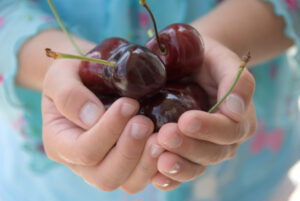Beans have a long history throughout the world. An excellent source of protein and fibre they were great for those of humble means. Poor man’s food, they grew wild in some cases and could be gathered, dried and stored away for those leaner cold months where a bit of comfort food would have gone a long way.
History relates many a story of beans and where they have appeared. Jack was not on his own when it came to magic beans. The Chinese used to throw beans in order to ward off evil spirits, the Romans were also fond of throwing them about in order to decide upon political matters. Maybe due to their ability to cause digestion issues, they were also noted as food of the devil. I can hardly see the devil sitting down to a huge helping of beans-maybe a meaty cassoulet with a bean accompaniment but really-just beans?
The nice thing is that beans appear all over the place. Dhal of India, the cassoulet of France, hummus of the Middle East, even the baked beans of many a New Zealand pantry all play a part in the great story of the bean.
Beans are classified nice and simply by the Food and Agricultural Organisation. A pulse is an annual leguminous crop that from its pod yields one of twelve gains or seeds. They have created a category of 11 primary pulses that cover everything under the simple headings of dry bean, dry, dry broad beans, peas, chickpea, dry cow pea, pigeon pea, lentil……….it isn’t that fascinating so I wont go on but luckily for us someone out there has done all the hard work so we are able to correctly categorise beans.
With three times more protein than rice and twice that of wheat, beans are pretty damn good for you. All pulses are said to reduce mortality from coronary heart disease.
Anything called split, split-lentil or split pea-have had their outer casing or skin removed. Things get a little complex here as dhal is a lentil but not split and the family itself is also called a pulse and includes the black and beluga lentil as well as the rather fashionable French Green Puy lentil. Split pulses tend to cook quicker but do not retain their shape as well. Cooking times vary dramatically.
Lentils are one of the best sources of iron. They have high levels of proteins (even higher if you are brave enough to sprout them and eat them raw) and also contain vitamin B1, minerals and folate.
Soaking is an important part of the cooking process. There is much to say on the subject of soaking and preparing of beans, some of it offering a level of scaremongering. I often am asked if dinner guests will die from eating beans that haven’t been cooked properly. I reassure them that unlike the dreaded fugu puffer fish, beans are fine but need a little care to avoid the indigestible starches being consumed.
Overnight soaking will do the trick and changing the soaking water several times is a good idea also. This is necessary for all the harder beans such as chickpeas, lima, haricot, kidney etc. Mung, black eye and adzuki can be treated more like lentils and soaked for a few hours to help them to cook quicker.
At any rate a good wash prior to soaking and cooking to remove any gritty bits and stones is recommended. Then into clean water in a large container that will allow room for the pulses to swell sufficiently and still be covered in water.
Once the soaking period is over, rinse them off again and then into a large pot for cooking with more fresh water. Bring them to the boil without the addition of salt as this toughens the skins and lengthens the cooking time. Maintain a gentle simmer rather than a rolling boil to avoid breaking them up.
Once cooked, they should be rinsed well again. Some recommend chickpeas to be cooled in their cooking liquid as they do continue to swell quite a bit and then rinsed. Store any cooked pulses and lentils for up to three days in the fridge.
When purchasing pulses look for those that are a good colour and size and don’t have a lot of debris floating about in the packet. A good Indian store is the best place for dhals and lentils as the turnover is high. For all others, try a good deli or health food store. You want nice fresh pulses that you can keep in your pantry for up to six months. Any longer storage results in lengthened cooking times as a slow loss of moisture will eventually result in a very dried and shrunken looking pulse.
The Bean Review
Peas You will find them predominantly in yellow and green but also blue. They are such great carriers of flavour. They are best soaked for a short period (up to an hour) to fast track the cooking time and they are a favourite of the bacon hock for a good old fashioned split pea and ham soup. You generally find them split rather than whole and they need about two hours cooking to break them down.
They are not only wonderful for soups but also make a great dhal.
Don’t discount frozen peas as a useful ingredient either. Fantastic ground up for dips and spreads as well as into risottos and salads, they are bursting with fresh flavour. Although categorised as a vegetable crop and a not a pulse, I am happy to include them as they are just too yummy not to.
Lentils
Coming from the Latin name for lens, the lentil was very popular with the Romans and Greeks. Originating in South Asia, there are known to have been one of the first domesticated crops. Once introduced to the Meditteranean they were much appreciated for their ability to be stored for long periods. Feed to hungry travelling troops, they were the perfect food for feeding massive numbers for little money.
For some reason they are deemed lucky in Rome and appeared on the New Years Eve table to welcome in another year of good fortune. The Italians enjoy them slow cooked with cuts of meat and offal.
The French Puy lentil has been made a fuss of in more recent years, appearing alongside more fashionable ingredients while the more humble yellow and red lentils are still the staple of the many mouths of India in the ubiquitous dhal. The Indians have a huge array of colours and sizes to choose from. All need a good rinse to get rid of dust and debris prior to use and can be cooked from raw or soaked for thirty minutes first. Cooking time can vary from 20 minutes to 1 hour depending on the desired texture you are going for.
Chickpeas
Seen in the most far flung regions of the world, the chickpea appears as a staple of many a table. Thrown into soups and casseroles, ground into pulses and dips, appearing in salads, fried for snacks, ground into flour or just making a statement on their own, they are much loved for their rich, nutty flavour. One of the few beans that is much the same fresh as it is dried or canned, they are a very convenient bean that has been embraced the world over.
Chickpeas need at least overnight soaking for them to fully re-hydrate and then a cooking time than can vary from 40 minutes to two hours. They older they are the slower the cooking time. Bear in mind they double in weight and volume once cooked and I know many who have made the mistake of soaking or cooking chickpeas in a far too small container only to find them escaping across the floor later.
Pea and Chickpea Falafel
I love the combination of fresh peas (or use frozen peas rinsed in cold water to defrost) pureed with chickpeas with a huge heap of mint, fresh coriander, salt and pepper. Add 2 teaspoons each of ground coriander and cumin and a little flour to bind it all together. Make them into balls or small patties and place in a preheated 200 C oven in a well greased oven tray. Allow to brown, turning as needed until they are crispy on the outside.
Serve as a wee finger food with a yoghurt and garlic dipping sauce or stuff them into pita bread with fresh tomatoes, salad and yoghurt.
Great for the kid’s lunch boxes too.
Broad Beans
My favourite of all the pulses. Introduced to the Romans by the Egyptians, fava or broad beans are a favourite throughout Italy.
The best are the young tender beans that you will find frozen. They simply need to be peeled to reveal the beautiful fresh bright green colour and delicious nutty flavour. Once they get older they are canned. To use, simply wash and peel off their jackets. As a dried product they do need overnight soaking to fully re-hydrate and a good two hours of cooking. The Italians enjoy them cooked with speck or chunks of proscuitto and plenty of garlic, served alongside grilled meats.
Egyptian Broad Beans
This is a wonderful summer dish served cold or try it in winter served with grilled meats and fish. Any leftovers are fantastic the next day for lunch or keep any extra and churn it all up with a few glugs of olive oil to make a great spread to go on bruschetta.
Simmer soaked broad beans till soft. Drain well and remove their jackets.
Once cooled, simply sauté 4 cloves of crushed garlic with 1 finely chopped red onion till softened and just beginning to brown. Take off the heat and mix through the cooked and peeled broad beans. Add salt and pepper to taste, 1 teaspoon sumac or the juice of 1-2 lemons depending on your taste, a handful of freshly chopped Italian parsley and olive oil to mix. A good quality walnut oil is very tasty here too.
White Beans
Part of the kidney bean family, the white bean category includes the lima, butter, cannellini and haricot beans.
The Tuscans are their biggest fans and are appropriately named ‘bean eaters’ because of the vast amounts they consume. Visit all sorts of areas of Europe and white beans will appear in all manner of creations from salads to soups, purees and spreads and naturally the classic cassoulet. Cultivated in the Campania region of Italy, they are the most bottled and canned pulse in Italy.
We all also know them as the classic baked bean and when home made, they are fantastic.
Soak overnight again and rinse well before cooking for up to 2 hours.
Winter Mash
A fantastic and totally decadent mash combines cannellini with potatoes.
In a food processor I churn up a whole head of roasted and peeled garlic with one well rinsed can of cannellini beans and a little fresh rosemary, salt and pepper. Add a little olive oil to get it to a nice smooth consistency. Simply boil your potatoes as usual. Drain and tip into a large bowl. Mix through the cannellini beans and add a little more olive oil to achieve the desired consistency. Serve under slow cooked or grilled meats, or just good old quality sausages.
Borlotti Beans
Much loved by the Italians also, the borlotti is easily identifiable with its striking red and white speckled pod.
The most famous dish of Northern Italy, Pasta e Fagioli uses borlotti, half of which are mashed to create a smoother textured, thick soup.
They need to be treated much the same as the white bean family with extensive soaking and a cooking time of about 2 hours. As they have a similar creamy texture to the white bean family they are fantastic in soups, salads and stews.
Poached chicken with Borlotti Beans and Baby Vegetables
A super wintery dish that really needs a little attention to get started but can quietly do its thing while you get on with your Sunday afternoon. Poaching chicken is a lovely way to get the most flavour from it and it is very healthy too.
Start with 1 white onion, finely chopped and 2 cloves garlic, crushed.
Heat a little oil in a large casserole and soften the onion and garlic on a low heat.
Place one whole chicken into the pot and add 1 bay leaf. Cover with water and set the lid on to simmer for 20 minutes.
Add a good handful of baby vegetables at this stage-carrots, turnips, fennel, leeks, and potatoes and place the lid back on for a further 30 -40 minutes.
Remove the chicken and cool enough for you to portion it up.
Add 2 cups of cooked borlotti beans to the vegetables and taste for seasoning.
I like to add the zest of half a lemon at this stage as well as a good handful of freshly chopped seasonal herbs. In winter, tarragon works beautifully but Italian parsley is fantastic, lemon thyme works well, even basil in summer can make this quite a different dish.
Bring the vegetables back up to a simmer.
Place the chicken in large shallow bowls, top with vegetables and ladle over the beans and broth. Serve with crusty bread to mop up the juices.
Many people seem to feel that there is just too much work involved in cooking with beans.
Admittedly it takes a little forethought but the soaking time can be done overnight and cooking time can be done while you are doing other things about the house. They certainly don’t need a watchful eye, just plenty of water and easy simmering.
Once cooked, they can serve so many purposes.
Make this winter a bean winter!!







Hi,
I currently live in Auckland and have not found any store that sells died beans of any kind. Can you please suggests a store where I could find beans.
Beans used to be a very big part of my diet before and now I cant find any.
Thank you
I learnt a lot from your article, but just curious – what about the chinese use of red and black beans, and bean curd?
Dear Michal Haines
Thanks so much for this Bean item. Only now have I found time to read it, but so glad I did. I am in Italy and use pulses a lot as do the Italians, as you say.
Can I cook these in the slow cooker? Anything to watch out for?
Can’t wait to make the Winter Mash (even if it is summer here)
Hey Symone,
I would suggest that you beans are old or have been heat treated. heat treating is a very naughty thing that MAF do to things when they come into the country without any certification. They literally bake them in a agiant oven for 24 hours at a low heat to kill anything and evrything.everyhting includes any nutrional value.Look ofr those labelled organic and non heat treated.
I have some dried kidney beans and have soaked them over night them cooked and they have still bean (sorry about the pun) hard . what am I doing wrong ? no salt added